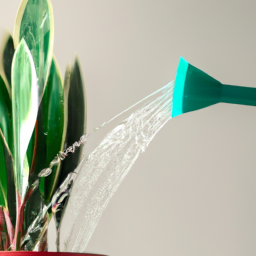
The Importance of Proper Watering Techniques for Healthy Plant Growth
Watering is a crucial aspect of plant care that directly affects their overall health and growth. While it may seem like a simple task, using the best watering techniques can make a significant difference in the vitality and longevity of your plants. In this guide, we will explore the importance of proper watering techniques and provide you with a step-by-step approach to ensure your plants thrive.
Understanding the Watering Needs of Plants
Before diving into the best watering techniques, it is essential to understand the specific watering needs of different plants. Factors such as the plant species, stage of growth, environmental conditions, and soil type all play a role in determining how much water your plants require.
Most plants thrive in moist but well-drained soil. Overwatering can lead to root rot and other fungal diseases, while underwatering can cause wilting and stunted growth. It is crucial to strike a balance and provide your plants with the right amount of water to promote healthy growth.
One effective way to determine if your plants need watering is by checking the moisture level of the soil. Stick your finger about an inch deep into the soil near the plant’s roots. If it feels dry, it’s time to water. If it feels moist, hold off for a little longer. Remember, different plants have different moisture requirements, so it’s always best to research the specific needs of each plant in your care.
The Best Watering Techniques
Now that we understand the importance of watering and how to gauge the moisture level, let’s explore the best watering techniques to ensure healthy plant growth:
1. Water at the Right Time of Day: The ideal time to water your plants is early in the morning or late in the afternoon. This allows the water to penetrate the soil before the sun’s heat evaporates it. Avoid watering during the hottest part of the day, as it may lead to water loss and scorching of the leaves.
2. Water the Roots: When watering your plants, it is crucial to focus on the root zone. This is where the majority of the plant’s water-absorbing roots are located. Avoid overhead watering as it can lead to fungal diseases and wastage of water. Instead, use a watering can or a soaker hose to deliver water directly to the base of the plant.
3. Deep Watering: To encourage healthy root development, it is important to water deeply rather than frequently. Deep watering promotes downward root growth, making plants more resilient to drought conditions. Aim to provide enough water to penetrate at least 6 inches into the soil.
4. Avoid Waterlogging: While it is essential to water your plants adequately, it is equally important to avoid waterlogging. Poorly drained soil can suffocate the roots and lead to root rot. If you notice water pooling around your plants, consider improving the drainage by adding organic matter or creating raised beds.
5. Mulching: Applying a layer of organic mulch around your plants can help retain moisture in the soil, reduce weed growth, and regulate soil temperature. Mulching also prevents excessive evaporation, allowing the plants to make the most of the water provided.
6. Adjust Watering Based on Season: Different seasons require different watering approaches. During hot summer months, plants may require more frequent watering, while in cooler months, you can reduce the frequency. Pay attention to weather conditions and adjust your watering schedule accordingly.
Conclusion
Proper watering techniques are essential for promoting healthy plant growth. By understanding the watering needs of your plants, using the right techniques, and paying attention to environmental factors, you can ensure your plants thrive. Remember to water at the right time of day, focus on the root zone, water deeply, avoid waterlogging, mulch, and adjust watering based on the season. By following these steps, you will become a master at providing your plants with the hydration they need to flourish.
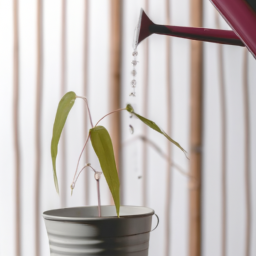
Essential Tips for Watering Plants: Finding the Best Approach
Watering plants may seem like a simple task, but it is crucial to understand the best approach to ensure the health and vitality of your green companions. In this guide, we will explore the essential tips for watering plants, providing you with an analytical perspective on the subject.
Understanding the Watering Needs of Plants
Before diving into the best way to water plants, it is important to grasp the basic needs of different plant species. Each plant has its own unique requirements, influenced by factors such as climate, soil type, and stage of growth. By understanding these needs, you can tailor your watering approach accordingly.
First and foremost, it is necessary to recognize that overwatering can be just as detrimental as underwatering. While plants require water to thrive, excessive moisture can lead to root rot and other diseases. On the other hand, insufficient water can cause dehydration and stunted growth.
One way to determine the watering needs of your plants is to observe the soil moisture. Stick your finger about an inch into the soil near the plant’s roots. If it feels dry, it’s time to water. However, if it feels moist, hold off on watering for a little longer. This simple test can help you avoid both overwatering and underwatering.
The Best Watering Techniques
Now that we have a basic understanding of plant watering needs, let’s explore the best techniques to ensure optimal hydration for your plants.
1. Watering at the Right Time: The timing of watering can greatly impact the absorption and utilization of water by plants. It is generally recommended to water your plants in the early morning or late afternoon when the temperatures are cooler. This allows the plants to absorb the water before it evaporates in the heat of the day.
2. Watering at the Base: When watering your plants, it is crucial to direct the water at the base of the plant near the roots. This ensures that the water reaches the areas where it is needed the most. Avoid watering the leaves as this can promote the growth of fungal diseases.
3. Deep Watering: Instead of frequent shallow watering, it is beneficial to water deeply, allowing the water to penetrate the soil and reach the roots. This encourages the roots to grow deeper, making the plant more resilient to drought conditions.
4. Watering Consistently: Consistency is key when it comes to watering plants. Rather than sporadic heavy watering, it is better to maintain a regular watering schedule. This helps establish a healthy root system and prevents water stress.
Additional Considerations for Watering Plants
While the above techniques are essential for watering plants, there are a few additional considerations that can further enhance the health of your green friends.
1. Mulching: Applying a layer of organic mulch around the base of your plants can help retain moisture in the soil, reducing the frequency of watering. Mulch also acts as an insulator, protecting the roots from extreme temperatures.
2. Rainwater Harvesting: Consider collecting rainwater to use for watering your plants. Rainwater is free from chemicals typically found in tap water and is often preferred by plants. Install a rain barrel or any other suitable system to collect and store rainwater.
3. Adjusting for Seasonal Changes: As seasons change, so do the watering needs of your plants. During hot summer months, plants may require more frequent watering, while in colder seasons, the watering frequency can be reduced. Stay attentive to the changing weather patterns and adjust your watering routine accordingly.
In conclusion, watering your plants in the best possible way is crucial for their overall health and well-being. By understanding the watering needs of different plants, employing the right techniques, and considering additional factors, you can ensure that your green companions thrive and flourish.
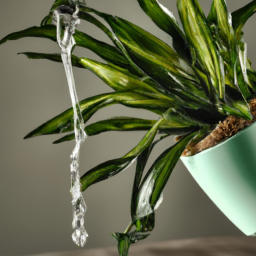
Watering Frequency: Determining the Ideal Schedule for Your Plants
Understanding the Importance of Watering Frequency
Watering is a crucial aspect of plant care, and determining the ideal watering schedule for your plants is essential for their overall health and well-being. While it may seem like a simple task, providing the right amount of water at the right time can significantly impact the growth, development, and longevity of your plants.
Watering frequency depends on various factors, including the type of plant, its stage of growth, the climate you live in, and the type of soil in which it is planted. By understanding these factors and considering them when determining your watering schedule, you can ensure that your plants receive the optimal amount of water they need to thrive.
In this article, we will guide you through the process of determining the ideal watering schedule for your plants, taking into account the different factors that influence watering frequency.
1. Assessing the Water Needs of Your Plants
The first step in determining the ideal watering schedule for your plants is to assess their water needs. Different plants have different water requirements, and understanding these needs is crucial for providing them with the right amount of water.
Start by researching the specific water requirements of the plants you have. Some plants, like succulents, require less frequent watering as they have adapted to survive in arid conditions. On the other hand, plants like ferns and tropical flowers may require more frequent watering due to their preference for moist soil.
Observe your plants closely and look for signs of dehydration or overwatering. Wilting, yellowing leaves, and dry soil are indications that your plants need more water, while yellowing leaves with soggy soil may suggest overwatering. Adjust your watering frequency accordingly based on these observations.
Remember that the water needs of plants may also change with the seasons. During hot summer months, plants generally require more water to combat evaporation, while in cooler months, they may need less frequent watering.
2. Understanding Soil Moisture Levels
The moisture level of the soil is another crucial factor to consider when determining the watering frequency for your plants. Different types of soil retain water differently, and understanding your soil’s moisture-holding capacity is essential for providing adequate hydration to your plants.
Start by assessing the texture and composition of your soil. Sandy soils tend to drain quickly, while clay soils retain more water. Loamy soils strike a balance between the two, providing good drainage while retaining adequate moisture. Understanding your soil type will help you adjust your watering schedule accordingly.
Perform a simple soil moisture test by inserting your finger about an inch into the soil. If it feels dry, it’s an indication that your plants need watering. However, if the soil feels moist, it’s a sign that you can hold off on watering for a little longer.
Consider using mulch around your plants, as it helps retain soil moisture by reducing evaporation. Mulching is particularly beneficial in hot climates or during dry spells when water evaporates more rapidly.
3. Factors Influencing Watering Frequency
Several external factors can influence the watering frequency for your plants. Understanding these factors will help you fine-tune your watering schedule to meet your plants’ needs effectively.
Climate: The climate in which you live plays a significant role in determining your plants’ water requirements. In hot and dry climates, plants tend to lose more water through evaporation and may require more frequent watering. In contrast, cooler and more humid climates may necessitate less frequent watering.
Seasonal Changes: As seasons change, so do the watering needs of your plants. During the active growing season, plants require more water to support their growth and development. In contrast, during dormant periods or winter months, they may need less frequent watering.
Container Size: If you have potted plants, the size of the container can affect their water requirements. Smaller pots tend to dry out more quickly, requiring more frequent watering, while larger pots retain moisture for longer periods.
Plant Size and Stage of Growth: The size and stage of growth of your plants also influence their water needs. Young plants and newly transplanted ones often require more frequent watering to establish their root systems. Mature plants, on the other hand, may have deeper roots and can tolerate longer intervals between watering.
Exposure to Sunlight: Plants exposed to direct sunlight may require more frequent watering as the heat increases evaporation rates. Conversely, plants in shaded areas may need less water due to reduced evaporation.
By considering these factors and adapting your watering schedule accordingly, you can ensure that your plants receive the optimal amount of water to thrive.
Conclusion
Watering frequency is a critical aspect of plant care, and determining the ideal schedule for your plants is essential for their overall health and growth. By assessing the water needs of your plants, understanding soil moisture levels, and considering external factors that influence watering frequency, you can provide your plants with the optimal amount of water they require to thrive.
Remember to closely observe your plants, adjust your watering schedule based on their specific needs, and be mindful of seasonal changes and other factors that may affect their water requirements. With a little care and attention, you can ensure that your plants receive the right amount of water, leading to vibrant, healthy, and flourishing greenery in your garden or indoor space.
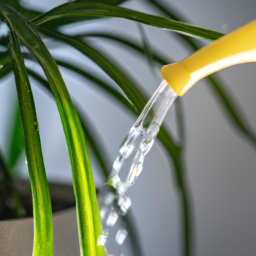
Choosing the Right Watering Methods: From Traditional to Modern Techniques
Watering your plants may seem like a simple task, but it is crucial to do it correctly in order to promote healthy growth and prevent potential damage. With numerous watering methods available, it can be overwhelming to determine the best approach for your plants. In this guide, we will explore various techniques, from traditional to modern, to help you make an informed decision and ensure your plants thrive.
Traditional Watering Methods
1. Watering Can:
One of the most common and traditional methods of watering plants is using a watering can. This method offers precise control over the amount of water being delivered to the plants. Fill the watering can with water and gently pour it around the base of the plant, avoiding the foliage. This technique is particularly useful for small indoor plants or those planted in pots or containers.
2. Garden Hose:
Another traditional method is using a garden hose. Attach a nozzle with a gentle spray option to the hose and water the plants by directing the water towards the base. Ensure the water penetrates the soil deeply to reach the roots. However, be cautious not to overwater or damage delicate plants with high water pressure.
3. Sprinkler System:
A sprinkler system is a convenient way to water larger areas or gardens. Install sprinklers strategically to ensure even coverage. Adjust the water pressure and timing according to the specific needs of your plants. However, keep in mind that sprinklers may not be suitable for all plants, especially those susceptible to fungal diseases or those requiring specific watering methods.
Modern Watering Techniques
1. Drip Irrigation:
Drip irrigation is an efficient and water-saving technique that delivers water directly to the roots of plants. It involves a network of tubes or pipes with small emitters that release water slowly and consistently. This method minimizes water wastage and reduces the risk of fungal diseases. Drip irrigation is particularly beneficial for large gardens, vegetable patches, or plants requiring consistent moisture.
2. Self-Watering Systems:
Self-watering systems are an innovative solution for individuals who may not have the time or capacity to water their plants regularly. These systems typically consist of a reservoir that holds water and a wicking mechanism that draws water up to the plant’s roots as needed. They provide a consistent water supply and help maintain optimal moisture levels, especially for potted plants.
3. Moisture Sensors:
Moisture sensors are devices that measure the moisture content in the soil. They can be inserted into the soil near the plant’s roots and provide real-time data on soil moisture levels. This information helps you determine when and how much to water your plants, preventing both under and overwatering. Some advanced sensors can even be connected to automated watering systems for precise control.
Conclusion
Choosing the right watering method for your plants is essential to their overall health and growth. Traditional methods such as watering cans, garden hoses, and sprinkler systems offer versatility and convenience. On the other hand, modern techniques like drip irrigation, self-watering systems, and moisture sensors provide efficient and precise watering, saving both water and time.
Consider the specific needs of your plants, the size of your garden, and your personal preferences when selecting a watering method. Remember to monitor your plants regularly and adjust your watering routine as necessary. By following the best watering practices, you can ensure your plants receive the optimal amount of water, promoting their vitality and beauty.
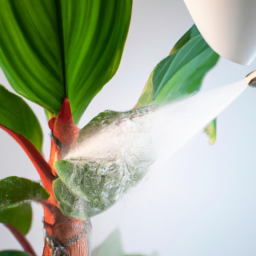
Factors to Consider When Watering Plants: Sunlight, Soil Type, and Plant Species
As an expert in plant care, I understand the importance of watering plants correctly. Watering is a vital aspect of plant health and can significantly impact their growth and overall well-being. In this comprehensive guide, I will walk you through the best way to water a plant, taking into consideration three crucial factors: sunlight, soil type, and plant species.
1. Sunlight
One of the first factors to consider when watering your plants is the amount of sunlight they receive. Sunlight plays a critical role in the process of photosynthesis, where plants convert light energy into chemical energy, fueling their growth. The intensity and duration of sunlight directly affect a plant’s water requirements.
Plants that receive direct sunlight for several hours each day tend to lose moisture more quickly and, therefore, require more frequent watering. On the other hand, plants in shaded areas or those receiving indirect sunlight have reduced evaporation rates and may need less water.
It is essential to monitor your plant’s location and adjust your watering schedule accordingly. Pay attention to signs of wilting or drooping leaves, as these can indicate both underwatering and overwatering. Finding the right balance is crucial for optimal plant health.
2. Soil Type
The type of soil in which your plants are rooted plays a significant role in determining their watering needs. Different soil types have varying abilities to retain moisture and provide adequate drainage.
Clay soils, for example, have small particles that pack tightly together, making it harder for water to penetrate and drain effectively. This can lead to waterlogged roots and potential root rot. Plants in clay soils require less frequent watering but need deep watering to ensure moisture reaches the roots.
Sandy soils, on the other hand, have larger particles that allow water to drain quickly. This can result in faster evaporation and a need for more frequent watering. However, sandy soils also require less water per session, as excessive watering may lead to nutrient leaching.
Loamy soils strike a balance between clay and sandy soils, offering good drainage while retaining adequate moisture. Plants in loamy soils generally require regular watering to maintain optimal hydration levels.
3. Plant Species
Each plant species has its unique water requirements, and understanding these needs is crucial for successful watering. Some plants, such as succulents or cacti, have adapted to arid environments and can tolerate drought conditions. These plants typically require infrequent but deep watering to mimic their natural habitat.
On the other hand, plants that originate from tropical or humid regions might have higher water requirements. These plants often prefer consistently moist soil but not excessively wet conditions, as it can lead to root rot.
Researching the specific water needs of your plant species is essential. Consider factors such as their native habitat, growth stage, and any specific care instructions provided by nurseries or plant experts. By understanding your plant’s unique requirements, you can tailor your watering routine to promote optimal growth and health.
In conclusion, watering plants effectively involves considering several factors: sunlight, soil type, and plant species. By understanding the specific needs of your plants based on these factors, you can develop a watering routine that ensures their well-being. Remember to monitor your plants closely, observe any signs of distress, and adjust your watering schedule accordingly. With proper watering, your plants will thrive and bring joy to your indoor or outdoor space.
Frequently Asked Questions (FAQ)
1. What is the best way to water a plant?
Answer:
The best way to water a plant is to ensure that the soil is evenly moist, but not soggy. It’s important to water the plant at the base, near the roots, rather than spraying water on the leaves. Additionally, it’s advisable to water the plant in the morning to allow excess moisture to evaporate during the day.
2. How often should I water my plants?
Answer:
The frequency of watering plants depends on various factors such as the type of plant, environmental conditions, and the type of soil. As a general guideline, most plants require watering when the top inch of soil feels dry. However, it’s important to research the specific watering needs of each plant to ensure proper care.
3. Should I use cold or warm water to water my plants?
Answer:
It is generally recommended to use room temperature water to water plants. Cold water can shock the roots of the plant, while hot water can potentially damage them. Using water at room temperature helps prevent any drastic temperature changes that may harm the plant.
4. Is it better to water plants from above or below?
Answer:
It is generally better to water plants at the base, near the roots, rather than from above. Watering from above can lead to water sitting on the leaves, which can promote the growth of fungal diseases. Watering at the base allows the water to reach the roots directly, providing better hydration for the plant.
5. Can I water my plants with tap water?
Answer:
In most cases, tap water is suitable for watering plants. However, some tap water may contain chemicals like chlorine or fluoride that can be harmful to certain plants. If you are concerned about the quality of your tap water, you can let it sit in an open container for 24 hours before using it to water your plants. This allows any chlorine to dissipate.
6. How much water should I give to my plants?
Answer:
The amount of water needed by plants varies depending on factors such as the plant species, size of the pot, and environmental conditions. As a general rule, water the plant until you see water draining out from the bottom of the pot. This ensures that the roots are thoroughly hydrated. Avoid overwatering, as it can lead to root rot.
7. Can I use a spray bottle to water my plants?
Answer:
While using a spray bottle can be convenient for misting certain plants or providing humidity, it is not the most effective method for watering. Spray bottles typically only provide a light mist, which may not reach the roots of the plant. It’s best to use a watering can or a hose attachment with a gentle flow to ensure proper hydration.
8. Should I water my plants during winter?
Answer:
The watering needs of plants during winter can vary depending on the specific plant and the indoor or outdoor environment. In general, plants require less water during winter as they experience slower growth. However, it’s important to monitor the moisture level of the soil and adjust watering accordingly to prevent the plant from drying out.
9. Can I use recycled water or rainwater to water my plants?
Answer:
Using recycled water or rainwater to water plants can be a sustainable and eco-friendly practice. However, it’s important to ensure that the recycled water does not contain any harmful chemicals or contaminants that could negatively impact the plants. Similarly, if using rainwater, make sure to collect it in a clean container and avoid using it if it appears discolored or contaminated.
10. What are some signs that my plants are being overwatered?
Answer:
Overwatering can lead to various symptoms in plants. Some signs that your plants may be receiving too much water include wilting leaves, yellowing or browning of leaves, mold or fungus growth, and

James Wong is a renowned ethnobotanist, plant scientist, and local television presenter. With a passion for demystifying plant science, he is known for translating complex botanical concepts into practical advice for everyday plant enthusiasts. James’s expertise spans from traditional gardening to cutting-edge plant technologies, making his insights accessible and informative.


